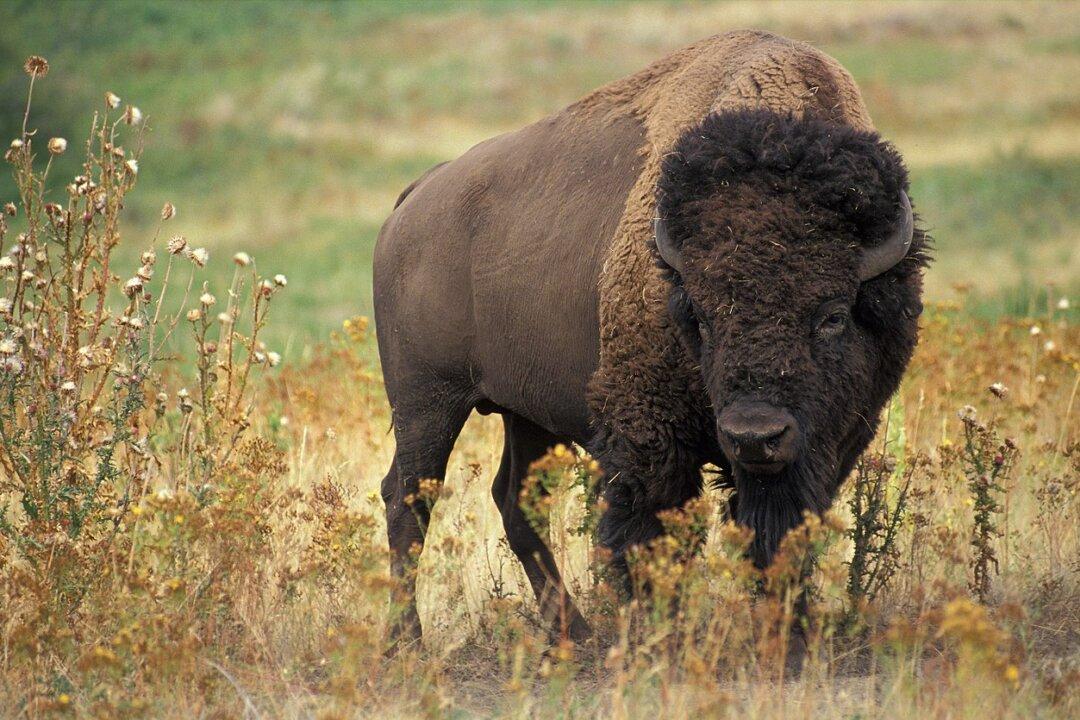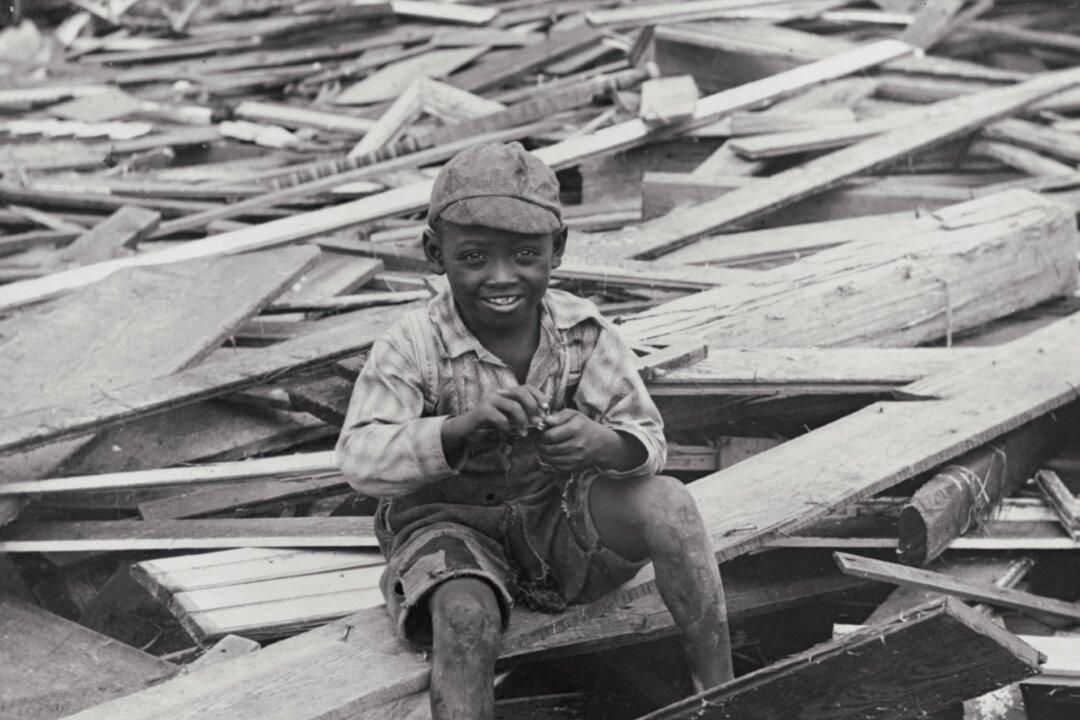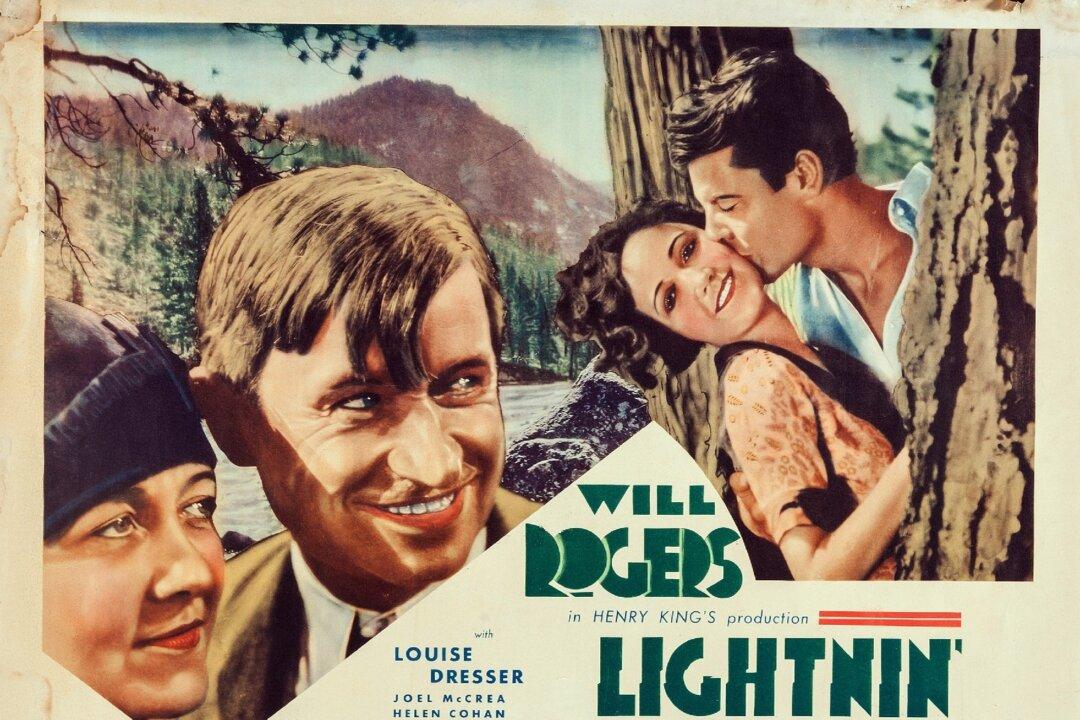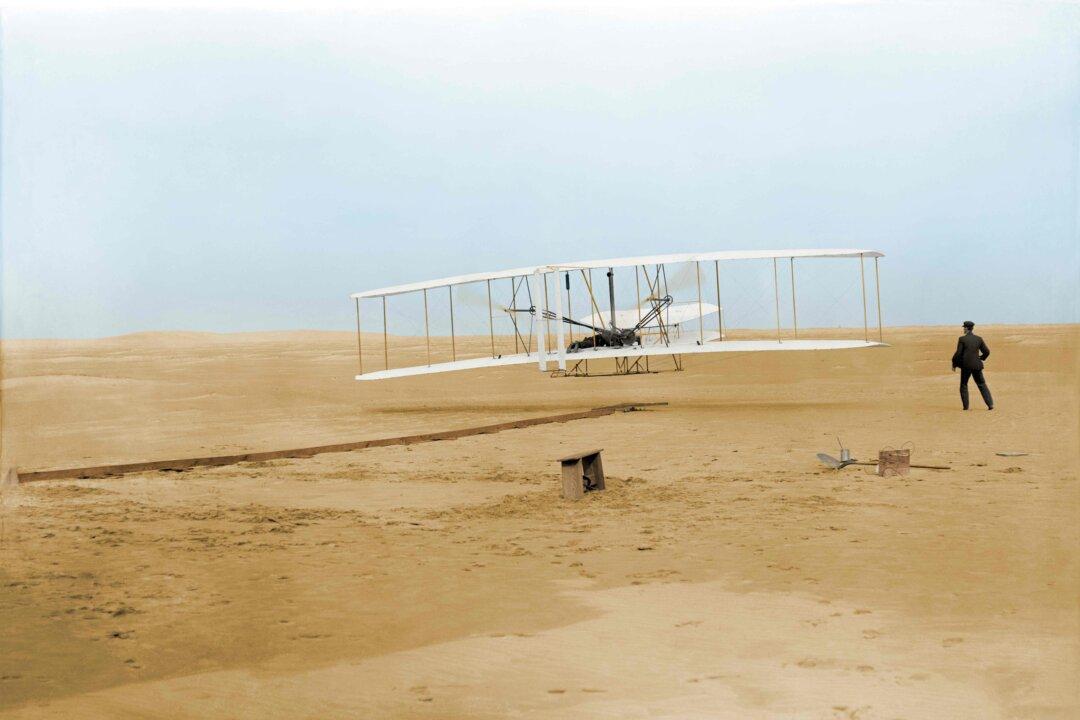On a mild fall day in October 1907, a large buffalo bull by the name of Comanche arrived in Comanche County, Oklahoma, and was met at the train station by Quanah Parker, a Comanche Indian chief.
Chief Quanah dressed in full war feathers, which wasn’t common since he had come off the war trail and settled into a grand, two-story house with multiple wives and children. Using his long legs, he climbed up into an Army ambulance from the late 1800s that looked like the old-type Western stagecoach. The wagon body was painted black and was pulled by four mules. Yellow curtains hung from the windows.





